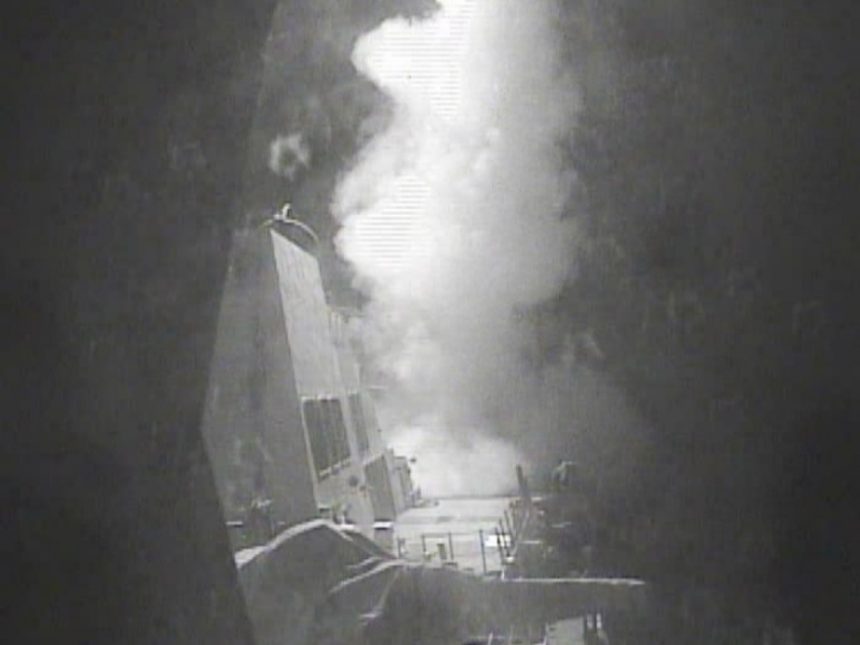The guided missile destroyer USS Nitze (DDG 94) launched a TLAM strike against three coastal radar sites in Houthi-controlled territory on Yemen’s Red Sea coast.
On Oct. 13, at around 4AM LT, the U.S. Navy has launched a retaliatory strike against coastal Houthi-controlled radar sites in Yemen, after three American vessels, USS Nitze and USS Mason guided-missile destroyers, and the Austing-class USS Ponce Afloat Forward Staging Base (formerly, amphibious transport dock) were attacked twice in just three days in international waters off Yemen.
“Due to hostile acts, continuing and imminent threat of force, and multiple threats to vessels in the Bab-al Mandeb Strait, including U.S. naval vessels, Nitze struck the sites, which were used to attack U.S. ships operating in international waters, threatening freedom of navigation. Nitze is deployed to the 5th Fleet area of operations to support maritime security operations and theater security cooperation efforts.”
The footage below shows USS Nitze fire Tomahawk cruise missiles against Iran-backed Houthi targets that have threatened attacks against ships in the Red Sea.
The three U.S. warships have been operating in the vicinity of Bab el-Mandeb following the attack on the UAE-flagged high-speed transport vessel HSV Swift severely damaged after being attacked by the rebels with what is believed to be a Chinese C-802 anti-ship missile possibly provided by Iran.
The U.S. retaliatory attack came hours after USS Ponce and Mason were attacked for the second time in four days on Wednesday. In the first encounter, on Sunday, the guided-missile destroyer fired three missiles, two Standard Missile-2s (SM-2s) and a single Evolved Seasparrow Missile (ESSM) to intercept the two missiles that were launched against the American vessels at 7 PM LT. In addition to the missiles, USS Mason used its Nulka anti-ship missile decoy.
Little is known about the Tomahawk Land Attack Missile (TLAM) used in the attack.
The Tomahawk IV can hit at a range of 1,000 miles and can adjust its flight path to pursuit moving targets. Guidance can come from various platforms, including ISR (Intelligence Surveillance Reconnaissance) planes and tactical aircraft.
In an interview given at the end of 2013, PACAF commander General Hawk Carlisle said 5th gen. aircraft will provide forward target identification for strike missiles launched from a surface warship or submerged submarine, in the future. The PACAF commander described the ability of the F-22s, described as “electronic warfare enabled sensor-rich aircraft,” to provide forward targeting through their sensors for submarine based Tomahawks. It’s not known whether the U.S. Air Force has already implemented this capability, though.
The missile, launched through a Vertical Launch System (VLS), is guided by an operator that can redirect the TLAM towards pre-planned alternate targets, or bring the missile to a “holding area” where it can wait for a new target of opportunity. It also features an anti-jam GPS receiver for enhanced accuracy. By means of data link, the RGM-109E missile can download imagery and health status messages to the control station so as to give the operator the ability to change the mission in accordance with the battlefield and cruise conditions.
Related articles
















